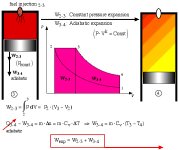BXpanded
Silver Member, Approved Advertiser
A lot of forklifts and man-lifts run on diesel as do skid steers.
With the exception of airplanes, the engines in the vehicles you mention are cheap and relatively light weight.
Diesels have heavier parts because of the higher pressures and temperatures experienced by the components. Special coatings on the piston crown reduce the oxidation caused by high gas temperatures. All this adds up to higher costs and weight. NASA had a program to develop a light weight diesel aircraft engine as well as a cheap tubofan) for light aircraft in the late 1990's and I believe it was completed. As far as I know, no engine manufacturer has taken the technology and utilized it in a commercial venture yet.
Excerpt from Continental website:Continental Diesel - Home
Altogether, the some 3,500 plus Continental Diesel engines operated in General Aviation have to date successfully completed more than 3.5 million flight hours. The weight of all Continental Diesel engines 1.7 and CD-135 is identical so that each 1.7 l engine can be replaced by a CD-135 engine.
The need for diesel engines in aircraft is primarily driven by the cost and lack of availability of the 100 octane low lead gasoline used by most FAA certified engines. The diesels use the same relatively inexpensive, Jet A fuel (kerosene) as larger turboprop and jet engine planes. Airports in many parts of the world, and even many US airports do not offer 100 LL as the comparably small quantities used by small aircraft do not make it economically justifiable. 100 LL is also on the EPA's list of targeted materials. Although research is ongoing, there is no really good substitute available at present. Due to the low demand for 100 LL, only about 10 refineries produce it. The price is quite high.
The diesel engines are very expensive. They can be somewhat cost justified by flight schools or charter operations that fly many hours and use large quantities of fuel.
